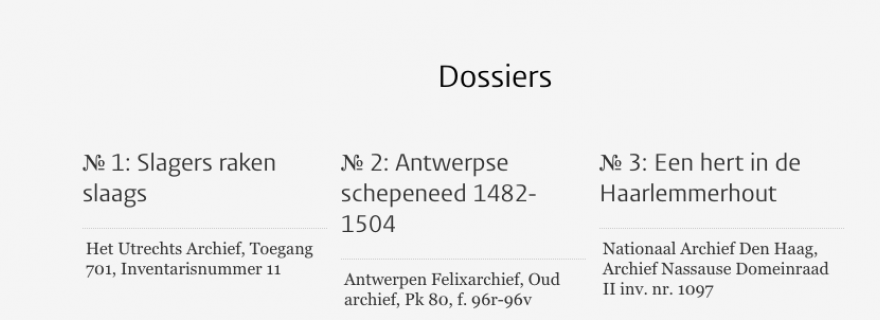Medieval palaeography: using IIIF in education
Robert Stein uses a new online Medieval Palaeography platform to teach students to read medieval archival documents and to translate the Middle-dutch to modern Dutch.
As of September 2020, the way senior university lecturer Robert Stein teaches the Medieval Palaeography course has been changed significantly. During the course students learn to read medieval archival documents and to translate the Middle-dutch to modern Dutch. Exercises used to be presented to students in PDF files with a scan or photograph of the original document embedded. The teacher would have to check the 'deciphered' texts that students handed in. The new online Medieval Palaeography platform has now replaced the PDFs and provides students access to high-resolution images and self-study exercises. For the teacher this means fewer transcriptions to check manually, while students can practice their skills on a larger set of documents. Additionally, they receive instant feedback on their transcriptions.
The platform presents each document in a dossier (file), that contains images (or links to IIIF images), an introduction to the text, the reference transcription, and a modern translation. Students can view the documents in all details, transcribe the assigned parts, and have their work compared to the reference transcription instantly. The platform doesn't know who the students are and only shows which parts of the transcriptions are correct and which are not, so that they can learn by trying. This way of working allows the teacher to lay particular focus during the brief time in (online) class on the parts students identify as harder to read. Meanwhile, there is more time to add a wider variety of texts to the platform for students to practice.
Happy students and teacher(s)
Near the end of the course, students said in a (pre-exam) survey that they think the platform is helping them study and that they enjoy using it. Dr. Stein feels that students understand difficult texts more easily, compared to a few years ago, although it is impossible to measure the effect of using the digital palaeography platform on the skill level.
Still, the students' enthousiasm and perceived increase in skill, as well as the pandemic leading most teaching to be online, led dr. Stein to provide exercises only through the new platform, rather than using a mix of old and new methods, as had been initially planned.
As the platform was not designed to provide students with objective marks, the exam will take place via other means.
Medieval Palaeography has received interest from other lecturers, some of whom are keen on using it in their courses. While we are looking at supporting shared editorial responsibilities for the documents on the platform, we are also working on similar projects based around other types of documents.
Collections communities
The Medieval Palaeography platform is the result of a collaboration of dr. Robert Stein (Institute for History), Ferdinand Harmsen at ECOLe (Faculty of Humanities), Marcel Villerius (Strategic Communication and Marketing), Laurents Sesink and me, Ben (Centre for Digital Scholarship). This collaboration has been great in other projects too.
The algorithms that compare students' transcriptions to a reference are already being implemented in Mouse and Manuscript, a very similar web platform for lessons on codicology and palaeography of Arabic and Coptic. Both Mouse and Manuscript and Medieval Palaeography were inspired by the Global Abnormal Hieratic Portal, a proof of concept for the use of digitised annotated papyri in class, and by Digital Manuscripts in the Classroom, a proof of concept aimed at teaching manuscript production and codicology using digitised Western medieval manuscripts.
All of these pilot projects and proofs of concept aim to support sources or collections communities, i.e. communities of practice interested in specific sources or special collections. As part of the Centre for Digital Scholarship's mission is to support the use of digital data, we are glad we could help with finding or creating platforms and tools for these communities.
Now that many of the UBL's Digital Collections are available via IIIF, creating platforms like these has become easier, because IIIF greatly reduces the dependency on the UBL as active provider of images.
This allows me to collaborate with other people, for example with folks at the Faculty of Law, as well as continue to advise and provide training on working with data. I will publish more on these existing and new collaborations in 2021.
Happy holidays from all of us at the Centre for Digital Scholarship!



